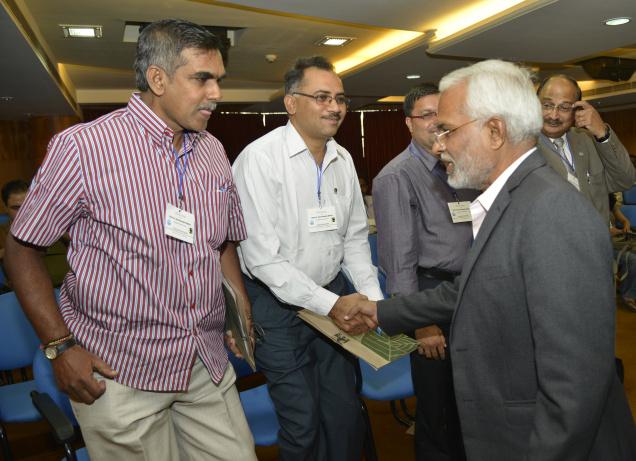KSPCB chairman Vaman Acharya greeting invitees at a workshop in Bangalore on Friday. Photo: K. Murali Kumar
BANGALORE, March 23, 2013
Bangalore, far from its adage of garden city, figures prominently on the list of highly polluted cities when tested on many pollution parameters, according to a report by the Centre for Science and Environment (CSE) on the state of air pollution and mobility.
Under particulate matter Bangalore has been identified as one among 14 cities that have high levels of particulate matter, while 47 per cent cities monitored in the State exceed ambient air quality standards in this category.
These figures are drawn from air quality analysis data by the Central Pollution Control Board, and are part of the statistics presented and discussed at a workshop conducted jointly by the CSE and the Karnataka State Pollution Control Board here on Friday.
Flagging a “multi-pollutant crisis that is waiting to break out”, the CSE report points out that in Bangalore and Hyderabad, benzene levels have seen an increase, and that ozone levels were seen exceeding limits in summer in Hyderabad alone.
The other parameters that are quickly entering the danger zone are nitrogen dioxide levels (where Bangalore is among 10 cities with rising levels), the data indicates.
Pollution hotspots
The data also indicates that inside Bangalore, the statistics are dismal for certain locations classified as “pollution hotspots”. Inside the city, three of nine locations have particulate matter levels (over 24-hourly standards) exceeding by no less than 50 per cent. Two of these mentioned in the report are near Graphite India in Whitefield and near the Yeshwanthpur Police Station. Seven out of these nine locations exceed the annual average standard, the report stated.
The workshop focussed on what immediate steps can be taken to tackle these issues. Vaman Acharya, KSPCB Chairman, said that the most immediate concern is the huge vehicular population. Air pollution continues unabated despite technological advancements that facilitate reduction of emissions, he said. Apart from emission, dust and garbage are also polluting the city. “The worst affected are children who suffer from asthma,” he said.
H. Paramesh, director of Lakeside Medical Centre and Hospital, concurred. He said that the number of cases of asthma has been on the rise for the past three decades. “We were earlier a pensioner’s paradise. Today, we are known for wheezing and asthma, and the city is a hell for pensioners,” he said.
He said that children between the ages of 2 and 17 suffer the most. In this age group, he added, eight per cent of children are found snoring and around 1.05 per cent suffer from Obstructive Sleep Apnea Syndrome. “People are paying with their heart, lungs and body,” he said.
BMTC Chief Engineer C.G. Anand said that fuel meeting BS 4 norms are being used for new buses in Bangalore. He said that two depots in the city are using ethanol diesel, which saves 0.7 paise per litre at the present diesel rate. “We plan to expand this to other fuel depots in the city so more buses use eco-friendly fuel,” he added.


